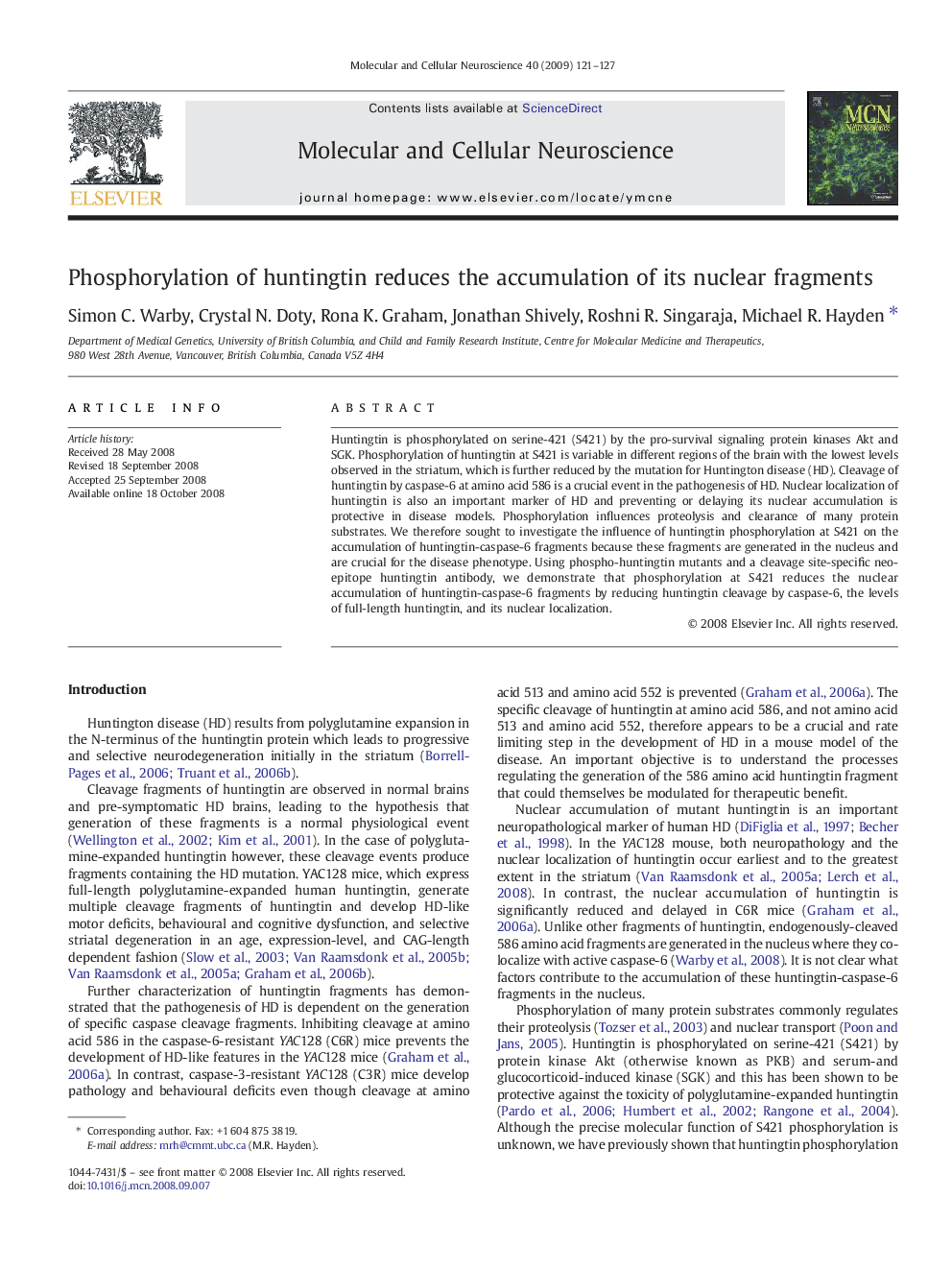| Article ID | Journal | Published Year | Pages | File Type |
|---|---|---|---|---|
| 10956709 | Molecular and Cellular Neuroscience | 2009 | 7 Pages |
Abstract
Huntingtin is phosphorylated on serine-421 (S421) by the pro-survival signaling protein kinases Akt and SGK. Phosphorylation of huntingtin at S421 is variable in different regions of the brain with the lowest levels observed in the striatum, which is further reduced by the mutation for Huntington disease (HD). Cleavage of huntingtin by caspase-6Â at amino acid 586 is a crucial event in the pathogenesis of HD. Nuclear localization of huntingtin is also an important marker of HD and preventing or delaying its nuclear accumulation is protective in disease models. Phosphorylation influences proteolysis and clearance of many protein substrates. We therefore sought to investigate the influence of huntingtin phosphorylation at S421 on the accumulation of huntingtin-caspase-6 fragments because these fragments are generated in the nucleus and are crucial for the disease phenotype. Using phospho-huntingtin mutants and a cleavage site-specific neo-epitope huntingtin antibody, we demonstrate that phosphorylation at S421 reduces the nuclear accumulation of huntingtin-caspase-6 fragments by reducing huntingtin cleavage by caspase-6, the levels of full-length huntingtin, and its nuclear localization.
Related Topics
Life Sciences
Biochemistry, Genetics and Molecular Biology
Cell Biology
Authors
Simon C. Warby, Crystal N. Doty, Rona K. Graham, Jonathan Shively, Roshni R. Singaraja, Michael R. Hayden,
